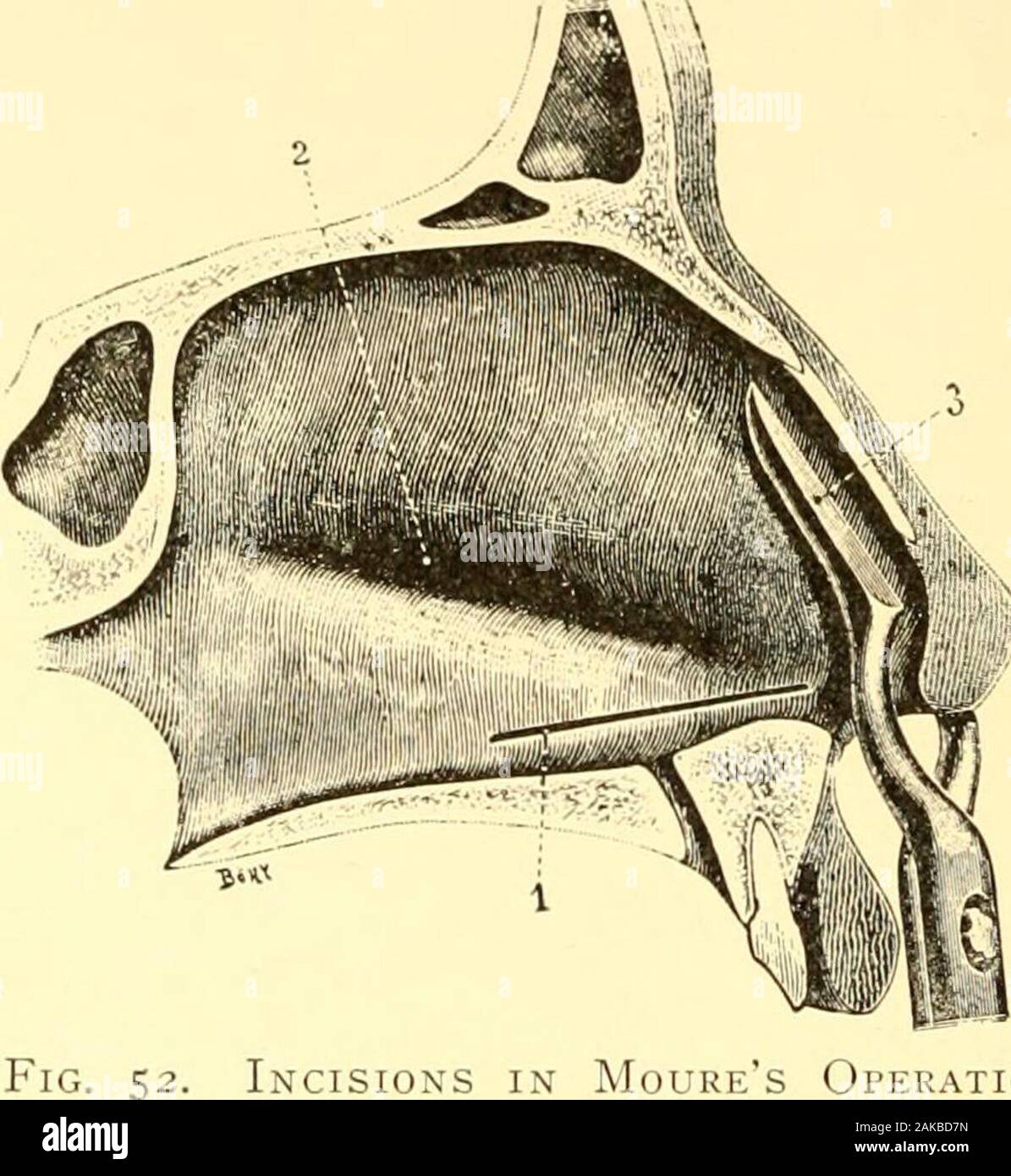Diseases of the nose and throat . o the majority of cases, but of course not all, since the three condi-tions to be met are not always found. In the first place a ridge ofcartilage, or ecchondrosis, at the apex of the deviation is removedwith an elliptical ring osteotome (Fig. 51). In the second placethe anteroinferior border of the cartilage, which is often luxated intothe nostril opposite the convexity of the deviation, is shaved off witha bistoury, after having been button-holed by an incision along itsmost prominent part. Finally after these wounds have healed, thatis, in the course of a m

Image details
Contributor:
The Reading Room / Alamy Stock PhotoImage ID:
2AKBD7NFile size:
7.1 MB (349.9 KB Compressed download)Releases:
Model - no | Property - noDo I need a release?Dimensions:
1516 x 1648 px | 25.7 x 27.9 cm | 10.1 x 11 inches | 150dpiMore information:
This image is a public domain image, which means either that copyright has expired in the image or the copyright holder has waived their copyright. Alamy charges you a fee for access to the high resolution copy of the image.
This image could have imperfections as it’s either historical or reportage.
Diseases of the nose and throat . o the majority of cases, but of course not all, since the three condi-tions to be met are not always found. In the first place a ridge ofcartilage, or ecchondrosis, at the apex of the deviation is removedwith an elliptical ring osteotome (Fig. 51). In the second placethe anteroinferior border of the cartilage, which is often luxated intothe nostril opposite the convexity of the deviation, is shaved off witha bistoury, after having been button-holed by an incision along itsmost prominent part. Finally after these wounds have healed, thatis, in the course of a month, the deviation itself is attacked. Thedirection of the incisions and the intranasal s]>linl used lor supporting 122 DISEASES OF THE NOSE AND THROAT. the septal fragments differ from those in other operations. The cutsare made with scissors, almost identical with those of Asch, the firstone nearly parallel with the floor of the nose and as close as possibleto the inferior attachment of the cartilage (Fig. 52). A second cut. n Moures Operation. is made obliquely upward and as close as possible to the dorsum ofthe nose, leaving a somewhat narrow bridge of cartilage between theanterior ends and a very wide one between the posterior ends ofthe incisions. This triangular movable fragment of cartilage isheld in front at the tip of the nose by a band of cartilage and behindby the perpendicular plate of the ethmoid and the vomer. A special Fig. S3- Moures Nasal Tube and Dilating Forceps. tube, composed of two parallel blades, the outer one rigid to restupon the turbinate, the inner one malleable, is then introduced. Themalleable blade is then moulded against the deviated cartilage, thuscorrecting the deflection to the desired degree, by means of dilatingforceps passed into the tube (Fig. 53). The tubes, which are made DEVIATIONS OF THE NASAL SEPTUM. 123 in pairs, one for either nostril, are left in situ for at least eight days, a single tube being used only on the convex side in